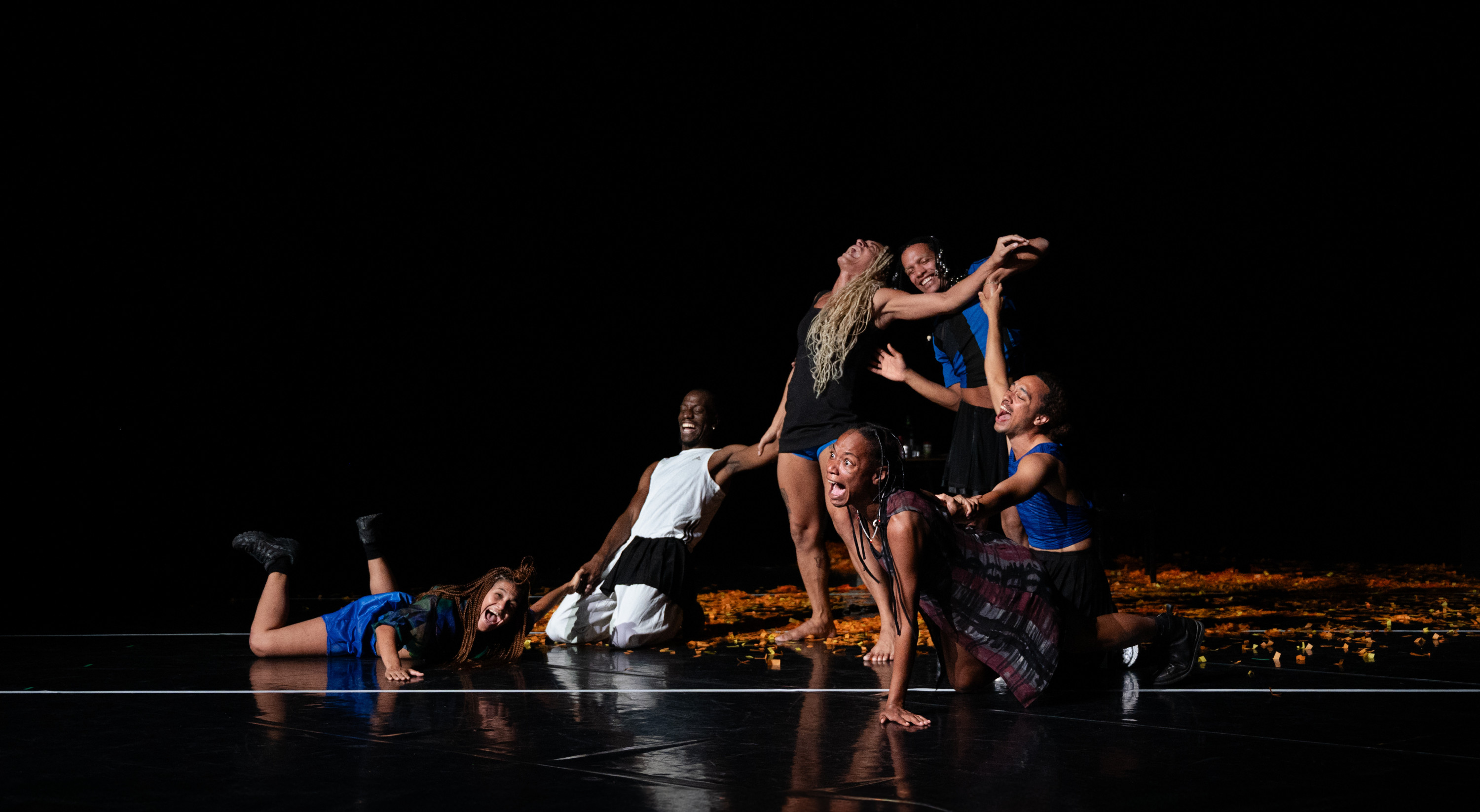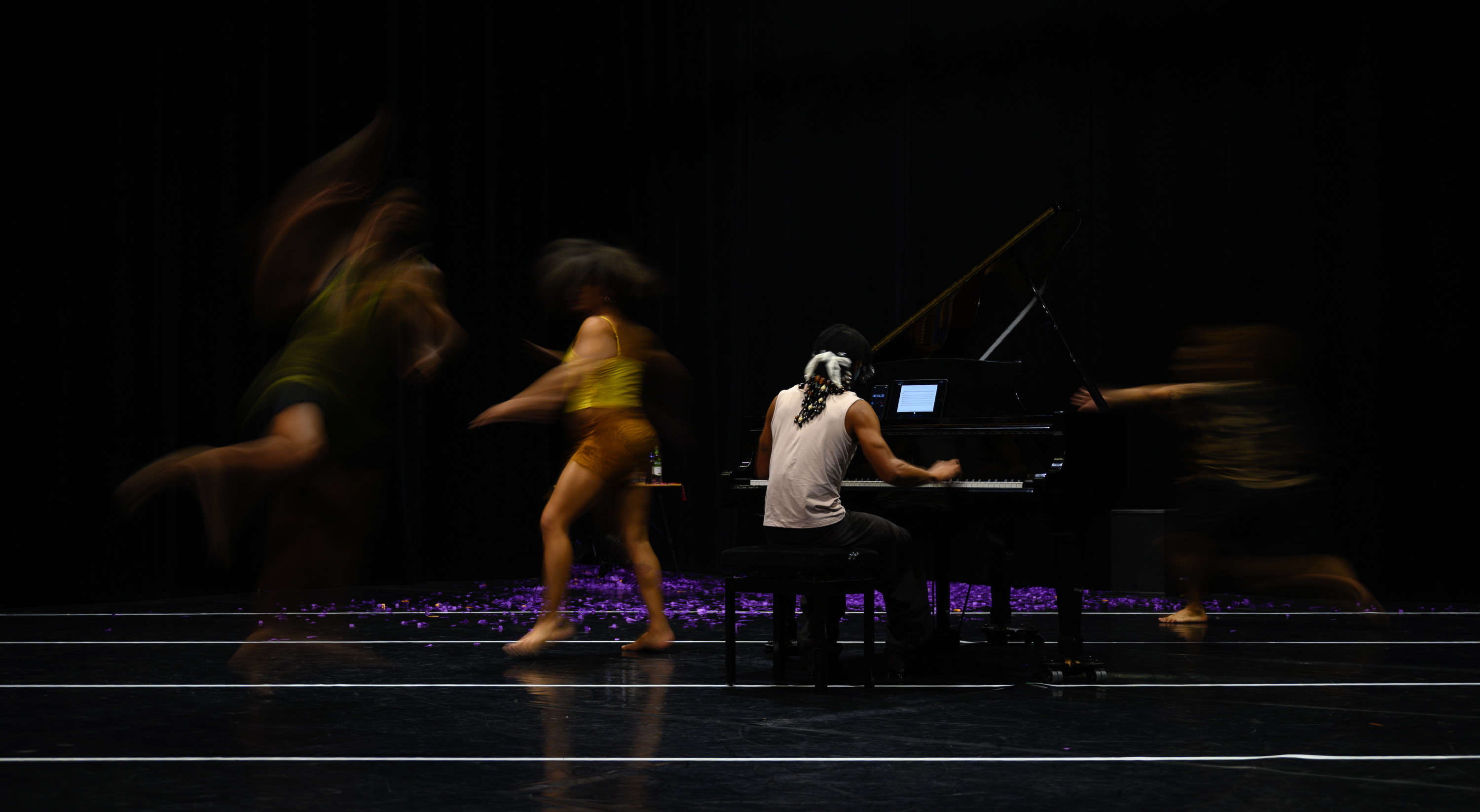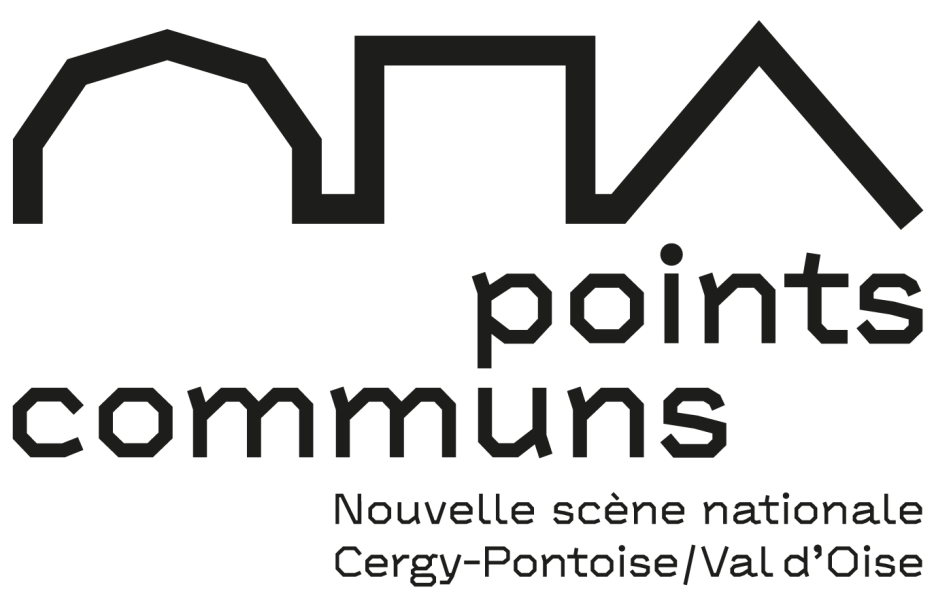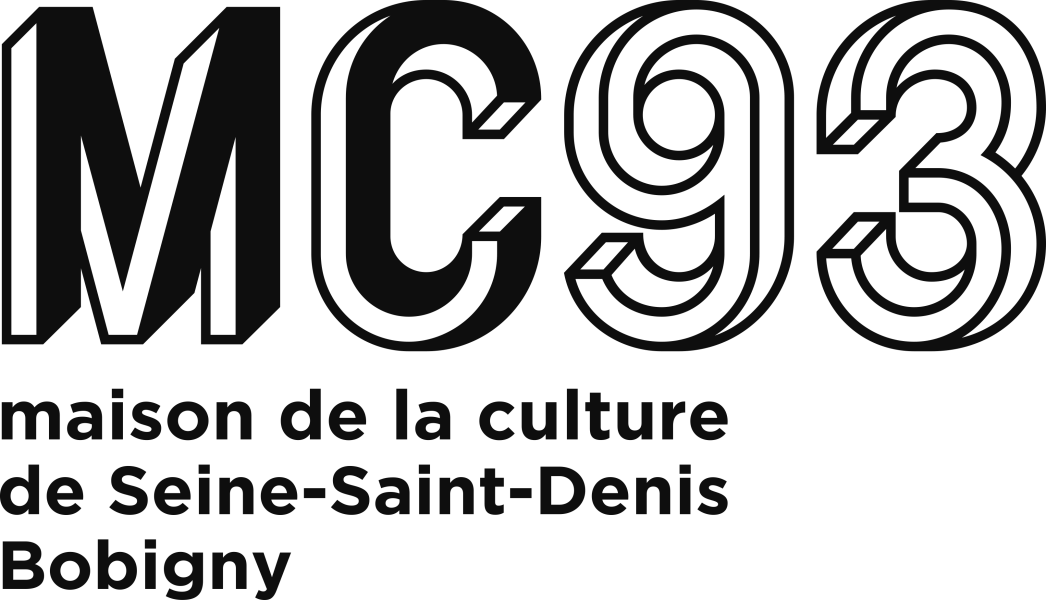Calixto Neto
Bruits Marrons
octoberoct 7 – 8
novembernov 19 – 21
Tuesday october 7
20h
Wednesday october 8
20h
Wednesday november 19
21h
Thursday november 20
21h
Friday november 21
21h
Choreography Calixto Neto. Performance Shereya, Andrège. Bidiamambu, Stanley Ollivier, Isabela Fernandes Santana, Ndoho Ange. Musical direction and performance Omar Gabriel Delnevo. Choreographic assistance Carolina Campos. Set design Morgana Machado Marques. Costumes Suelem de Oliveira da Silva. Lighting design Eduardo Abdala. Technical direction Marie Predour. Sound management Marie Mouslouhouddine. Production, administration and tour management Julie Le Gall.
Executive production VOA
Coproductions Points communs Nouvelle scène nationale de Cergy-Pontoise et du Val d’Oise, Festival d’Automne à Paris, CND Centre national de la danse, Charleroi danse Centre chorégraphique de la Fédération Wallonie-Bruxelles, Mille Plateaux CCN La Rochelle, Centre chorégraphique national de Grenoble as part of the studio residency program – Ministry of Culture, Cndc Angers as part of the studio residency program – Ministry of Culture
With the support of Kunstencentrum BUDA (Kortrijk), La Ménagerie de verre, DRAC Île-de-France – Ministry of Culture under a multi-year agreement, and sponsorship from Caisse des Dépôts
Action funded by the Île-de-France Region
CND Centre national de la danse, Points communs Nouvelle scène nationale de Cergy-Pontoise et du Val d’Oise, and the Festival d’Automne à Paris are coproducers of this work and present it in collaboration as part of the CND’s Plan D program
![]()
All venues at the MC93 are accessible to people with reduced mobility. If your situation requires specific seating arrangements, please contact them by email at reservation@mc93.com.
In Bruits Marrons, meaning ‘Brown Noises’, Calixto Neto enters into a dialogue with Julius Eastman and translates one of the African-American musician's hits, Evil Ni**er, into the body. Accompanied by six dancers, the Brazilian choreographer brings this percussive, radical and highly premonitory work up to date.
The American Julius Eastman, repulsed by the cultural Eurocentrism, homophobia and racism of his contemporaries, is known for having integrated his convictions into his classical compositions. A onetime university lecturer, and figure of the New York experimental music scene, this radical pioneer and dilettante ended his life, alone, and in extreme poverty. In an attempt to make amends, Bruits Marrons offers a choreographic rereading of the composer's combative work. After the samba in Feijoada, Calixto Neto and his dancers take on the challenge of the Eastman style, a mix of erudite contemporary music and uproarious arrangements. In the same way, he uses the piano as an instrument to be struck, thereby inviting the performers to subvert this symbol of classical music. The piece invites us to listen to Julius Eastman as the heir to an artistic lineage that has its roots in Africa, and which gave birth to blues, jazz and R&B in the United States, but also to maracatu, reggae and gwoka further south. Drawing upon the composer's freedom as an example, Calixto Neto summons a community of queer, immigrant, and racialized moving bodies in order to investigate present emancipation. A gesture which is as aesthetic as it is political, Bruits Marrons offers a symbolic family to the deceased, and woefully misunderstood musician.
In the same place




